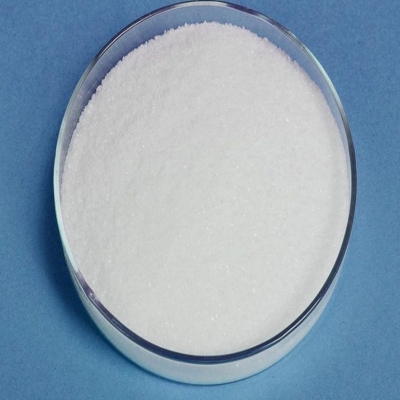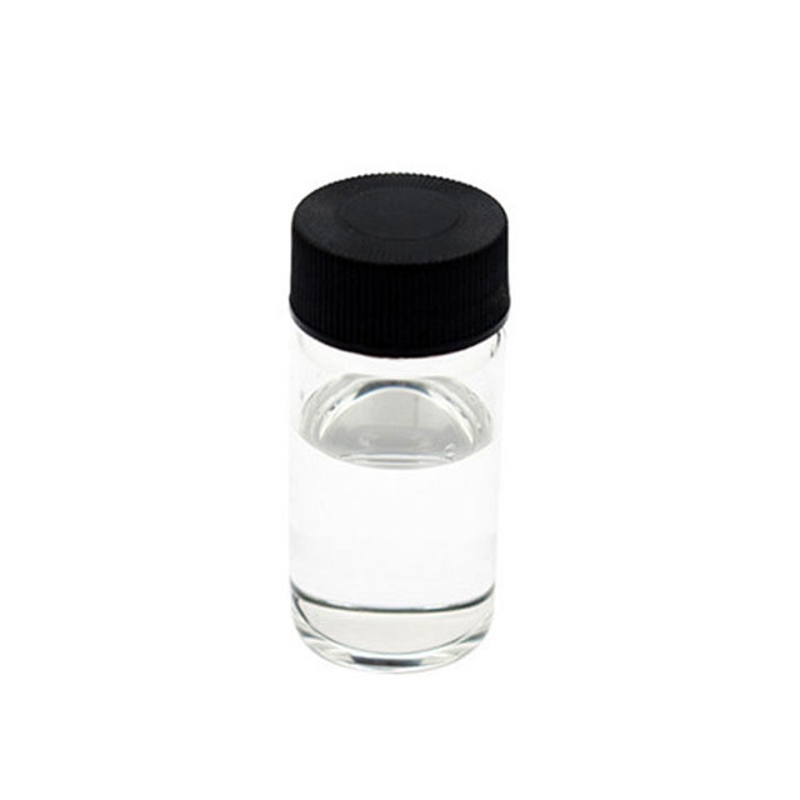Changshan Pharmaceutical Co., Ltd. is expected to obtain production approval before the Spring Festival
-
Last Update: 2020-04-03
-
Source: Internet
-
Author: User
Search more information of high quality chemicals, good prices and reliable suppliers, visit
www.echemi.com
Changshan pharmaceutical industry has made progress in the approval process of heparin sodium According to the website of the State Food and Drug Administration (CFDA), the production status of six chemical drugs of Changshan Pharmaceutical Co., Ltd for heparin sodium API and injection declaration has changed to "under approval" According to the R & D process of other new drugs, Changshan pharmaceutical industry is expected to obtain the production approval of the product before the Spring Festival, and become the third preparation in the field of heparin sodium of the company Changshan Pharmaceutical Co., Ltd is mainly engaged in heparin series products There are only two kinds of heparin preparations: low molecular weight heparin calcium injection and heparin sodium injection When the heparin sodium injection is listed on the market, it will reduce the risk of the company's excessive dependence on the two products Zhang Wei, Secretary of the board of directors of the company, once told the big wisdom news agency that daparin sodium injection is the company's first heavy imitated product With the help of the hospital departments that have been opened up at present, daparin sodium injection is expected to be accepted by the market in advance after being listed At present, some domestic enterprises produce heparin sodium APIs, which are mainly sold abroad However, no domestic enterprise has produced heparin sodium injection In addition to Changshan pharmaceutical industry, Dongcheng biochemical (002675 SZ), Qianhong Pharmaceutical (002550 SZ) and Nanjing Jianyou have all applied for production, among which Changshan pharmaceutical industry is far ahead in the approval process Dalteparin sodium injection [name (English)] dalteparin Na [alias] FA Anming [Specification] 0.2ml: 5000iu / box 5 branches [indication] treatment of acute deep vein thrombosis During hemodialysis and hemofiltration in patients with acute renal failure or chronic renal insufficiency, prevent coagulation in the cardiopulmonary bypass system Unstable coronary heart disease, such as unstable angina and non-Q-wave myocardial infarction Prevent thrombus formation related to operation [usage and dosage] if necessary, the activity of heparin sodium can be monitored by measuring anti Xa 1 Treatment of acute deep vein thrombosis Heparin sodium can be injected subcutaneously once a day or twice a day Usage once a day: 200iu / kg body weight, subcutaneous injection once a day, no need to monitor anticoagulant effect The daily total amount cannot exceed 18000iu Twice daily use: 100iu / kg body weight, twice daily subcutaneous injection, this dose is suitable for patients with high risk of bleeding Generally, there is no need to monitor in the treatment, but functional anti XA can be measured Blood samples were taken 3-4 hours after subcutaneous injection for correction, and the maximum blood concentration could be measured The recommended blood concentration range is 0.5-1.0iu anti XA / ml At the same time, vitamin K antagonists can be taken orally Heparin treatment should be continued until prothrombin complex level (factor II VII Ix.x) is reduced to the treatment level It usually takes at least 5 days for the combination therapy Prevent coagulation during hemodialysis and hemofiltration 2 Chronic renal failure, patients with no known risk of bleeding: hemodialysis and hemofiltration no more than 4 hours: dose as follows or intravenous rapid injection of 5000iu Hemodialysis and hemofiltration for more than 4 hours: 30-40 IU / kg body weight was injected intravenously rapidly, followed by intravenous infusion of 10-15 IU / kg body weight per hour Under normal circumstances, when patients are on long-term hemodialysis with faming (heparin sodium injection), the number of times to adjust the dose is very small, so the number of times to detect the anti XA concentration is also very small The dose given usually keeps the plasma concentration in the range of 0.5-1.0iu anti XA / ml 3 Acute renal failure, patients with a high risk of bleeding: intravenous rapid injection of 5-10iu / kg body weight, followed by intravenous infusion of 4-5iu / kg body weight per hour for acute hemodialysis patients with a short interval of treatment, should be fully monitored against Xa The plasma concentration should be kept in the range of 0.2-0.4iu anti XA / ml 4 Unstable coronary disease, such as unstable angina and non-Q-wave myocardial infarction 120 IU / kg subcutaneous injection twice a day The maximum dose is 10000IU / 12h At least 6 days of treatment, if the doctor thinks it necessary, it can be extended It is recommended to use low-dose acetylsalicylic acid at the same time 5 Prevention of operation related thrombosis (1) major operation with risk of thromboembolism complications: subcutaneous injection of 2500iu 1-2 hours before operation, and subcutaneous injection of 2500iu every morning after operation until the patient can move, generally taking 5-7 days or longer (2) Major operations and orthopedic operations with other risk factors: 5000iu subcutaneous injection at night before operation and 5000iu subcutaneous injection at night after operation The treatment should last until the patient can move, generally 5-7 days or longer In addition, 2500iu can be injected subcutaneously 1-2 hours before operation and 8-12 hours after operation Then 5000 IU were injected subcutaneously every morning [adverse reactions] especially in large doses, it may cause bleeding The common reported side effect is subcutaneous hematostatic swelling at the injection site Thrombocytopenia, skin necrosis, anaphylaxis and hemorrhage are rare It has been observed that the liver transaminase (AST, ALT) increased from mild to moderate degree Rarely seen in anaphylactic reactions [contraindications] allergic to this drug Acute gastroduodenal ulcer and cerebral hemorrhage Severe coagulation disease Septic endocarditis Central nervous system, eye and ear injury or surgery Thrombocytopenia patients with positive results of platelet aggregation test in vitro when using heparin sodium Local anesthesia was used in the treatment of acute deep vein thrombosis [note] faming (daparin sodium injection) is used cautiously in patients with thrombocytopenia, platelet deficiency, severe liver and kidney dysfunction, uncontrolled hypertension, hypertensive or diabetic retinopathy Patients who have recently undergone surgery should also be cautious when using large doses of heparin sodium It is suggested that platelet count should be checked and monitored regularly before heparin treatment Special attention should be paid to the rapid development of thrombocytopenia, as well as severe thrombocytopenia (< 100000 / μ L) with positive antiplatelet antibodies or unknown results in vitro experiments related to the use of farramine (daparin sodium injection) or other low-molecular-weight heparin and / or heparin Heparin sodium only slightly prolonged clotting time, such as APTT or thrombin time Determination of anti Xa activity was used for laboratory monitoring Increasing the dose to extend APTT may lead to drug overdose and bleeding In general, when patients with long-term hemodialysis use faming (heparin sodium injection), the number of times to adjust the dose is very small, so the number of times to detect the anti XA concentration is also very small The treatment interval of patients with acute hemodialysis is short, so the concentration of - XA should be monitored comprehensively If the patients with unstable coronary artery disease, such as unstable angina and non-Q-wave myocardial infarction have transmural myocardial infarction, they can be treated with thrombolysis It is not necessary to stop using Amin (daparin sodium injection) for thrombolysis, but it may increase the risk of bleeding [medication for pregnant women and lactating women] not clear [medication for children] not clear [medication for the elderly] not clear [drug interaction] at the same time, the use of drugs that have an impact on hemostasis, such as acetylsalicylic acid, non steroidal anti-inflammatory drugs, vitamin K antagonists and glucose may enhance the anticoagulant effect of heparin sodium However, in addition to the special contraindications for patients with unstable coronary artery disease such as unstable angina and non-Q-wave myocardial infarction, the general patients can take low-dose acetylsalicylic acid [drug overdose] protamine can inhibit the anticoagulant effect caused by heparin sodium The prolongation of clotting time can be completely counteracted, but the anti Xa activity can only counteract about 25-50% Each mg of protamine can inhibit the effect of 100 IU anti XA heparin sodium Protamine itself has an inhibitory effect on primary hemostasis, so it can only be used in emergency [pharmacology and toxicology] heparin sodium is an antithrombotic agent containing heparin sodium (low molecular weight heparin sodium) Daparin sodium is a kind of low molecular weight heparin sodium extracted from pig intestinal mucosa with an average molecular weight of 5000 Heparin sodium can enhance the inhibition of clotting factor Xa and thrombin by antithrombin (at), so as to play the role of antithrombotic DHA can enhance the ability of inhibiting clotting factor Xa, which is higher than that of prolonging APTT The effect of heparin sodium on platelet function and platelet adhesiveness is smaller than that of heparin, so it has little effect on hemostasis in primary stage However, some antithrombotic properties of heparin sodium are still considered to be formed through the influence on the blood vessel wall or fibrinolysis system [pharmacokinetics] the half-life after intravenous injection is 2 hours, and 3-4 hours after subcutaneous injection The bioavailability after subcutaneous injection was about 90% The half-life of uremic patients will be prolonged Besides the treatment dose range (30-120iu / kg), the half-life was slightly related to the dose Drugs are excreted through the kidneys.
This article is an English version of an article which is originally in the Chinese language on echemi.com and is provided for information purposes only.
This website makes no representation or warranty of any kind, either expressed or implied, as to the accuracy, completeness ownership or reliability of
the article or any translations thereof. If you have any concerns or complaints relating to the article, please send an email, providing a detailed
description of the concern or complaint, to
service@echemi.com. A staff member will contact you within 5 working days. Once verified, infringing content
will be removed immediately.







